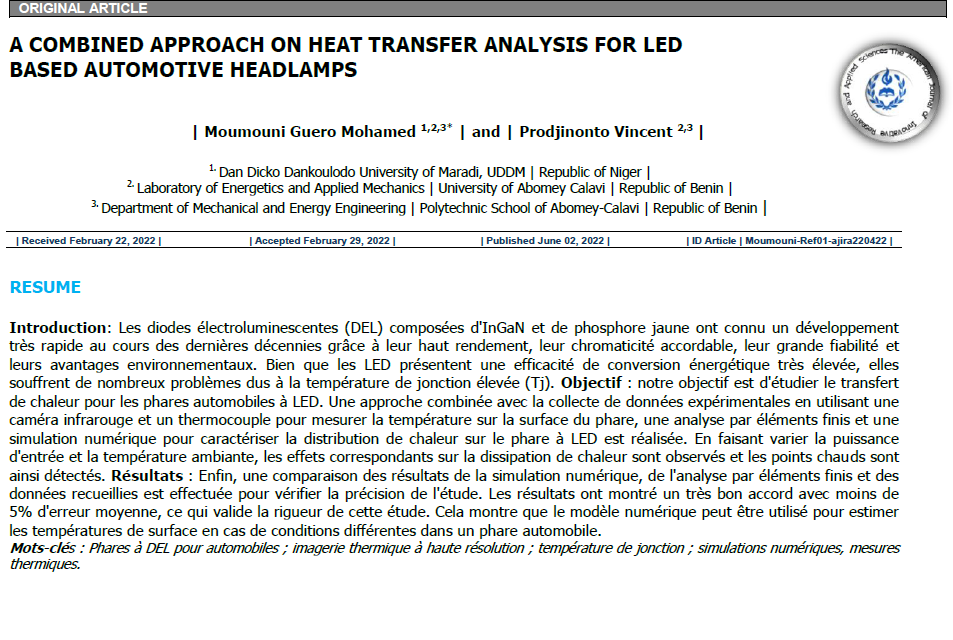
A COMBINED APPROACH ON HEAT TRANSFER ANALYSIS FOR LED BASED AUTOMOTIVE HEADLAMPS PDF
Preview A COMBINED APPROACH ON HEAT TRANSFER ANALYSIS FOR LED BASED AUTOMOTIVE HEADLAMPS
Background: Light Emitting Diodes (LEDs) composed of InGaN, and yellow phosphorus have undergone a very rapid development over the last decades with the high efficiency, tunable chromaticity, high reliability, and environmental benefit. Although LEDs boast exceedingly high energy conversion efficiency, they are suffering from many problems due to the high junction temperature (Tj). Objective: Our objective is to investigate the heat transfer for LED based automotive headlamps. A combined approach with experimental data collection by using an infrared camera and thermocouple to measure the temperature on the surface of the headlamp, finite element analysis, and numerical simulation to characterize the heat distribution on the LED headlamp is conducted. By varying the input power and the ambient temperature, the corresponding effects on the heat dissipation are observed and thus hot spots are detected. In the end, a comparison of the results of the numerical simulation, FEA, and the collected data is performed to verify the accuracy of the study. Results: The results showed particularly good agreement with less than 5% average error, which validates the strictness of that investigation. It shows that the numerical model can be used to estimate the surface temperatures in case of different conditions in an automotive headlamp.
Keywords: Automotive LED headlamps; high-resolution thermal imaging; Junction temperature; numerical simulations, thermal measurements.
